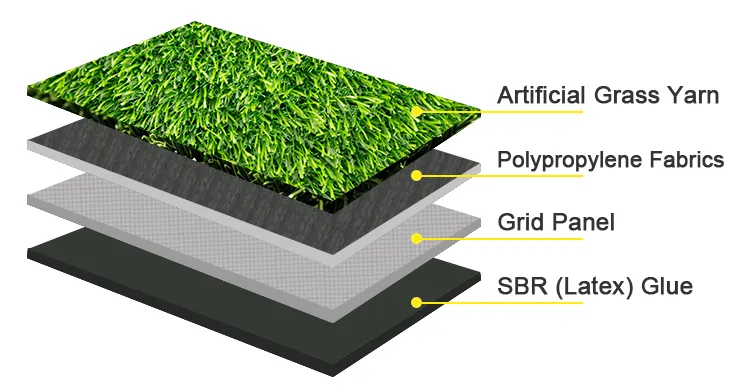
- Afrikaans
- Arabic
- Belarusian
- Bengali
- Czech
- Danish
- Dutch
- English
- Esperanto
- Estonian
- Finnish
- French
- German
- Greek
- Hindi
- Hungarian
- Icelandic
- Indonesian
- irish
- Italian
- Japanese
- kazakh
- Rwandese
- Korean
- Kyrgyz
- Lao
- Latin
- Latvian
- Malay
- Mongolian
- Myanmar
- Norwegian
- Persian
- Polish
- Portuguese
- Romanian
- Russian
- Serbian
- Spanish
- Swedish
- Tagalog
- Tajik
- Thai
- Turkish
- Turkmen
- Ukrainian
- Urdu
- Uighur
- Uzbek
- Vietnamese
playing football on artificial turf
Nov . 21, 2024 06:42 Back to list
Playing Football on Artificial Turf The Pros and Cons
Football, or soccer as it is known in some parts of the world, is one of the most beloved sports globally. It brings together individuals of all ages and backgrounds who share a passion for the game. With the evolution of playing surfaces, artificial turf has become increasingly popular in recent years. This article explores the various aspects of playing football on artificial turf, focusing on its benefits, drawbacks, and overall impact on the game.
The Rise of Artificial Turf
Artificial turf, a synthetic surface designed to mimic natural grass, was first introduced in the 1960s. Originally used in multi-sport facilities and stadiums, its durability and low maintenance have made it a common choice for football pitches. Today, many local clubs, schools, and universities have adopted artificial turf to enhance their playing conditions, especially in regions where natural grass struggles to thrive due to weather and soil quality.
Benefits of Playing on Artificial Turf
1. Durability and Weather Resistance One of the significant advantages of artificial turf is its resilience. Unlike natural grass, which can become muddy and unplayable after heavy rainfall, artificial surfaces allow play to continue regardless of weather conditions. This consistency is beneficial for training and matches, as it reduces cancellations due to poor field conditions.
2. Low Maintenance Maintaining a natural grass pitch requires a considerable amount of time, effort, and expense, including regular mowing, watering, and fertilizing. In contrast, artificial turf is relatively low-maintenance. While it needs periodic cleaning and occasional infill replacement, the overall upkeep is less demanding, freeing up resources for clubs and schools.
3. Playability Artificial turf can provide a more predictable playing surface. Players can expect consistent ball bounce and roll, which can enhance the quality of play. This stability can be particularly beneficial for youth leagues, where developing skill is crucial.
playing football on artificial turf

4. Increased Usage With artificial turf, facilities can host more games and training sessions without damaging the surface. This increased availability allows communities to maximize their use of sports facilities, fostering greater participation in the sport.
Drawbacks of Artificial Turf
1. Injury Concerns One of the primary concerns with artificial turf is the potential for injuries. Studies have shown that players may be at a higher risk of certain injuries, such as ACL tears and ankle sprains, when playing on artificial surfaces compared to natural grass. The added grip of the turf can sometimes lead to players getting stuck during sharp movements, increasing the injury risk.
2. Heat Retention Artificial turf tends to absorb and retain heat much more than natural grass. During hot summer months, playing on these surfaces can be uncomfortable and even hazardous. Players may face increased risks of heat exhaustion and dehydration while training or playing on hot days.
3. Environmental Impact The production and disposal of artificial turf raise environmental concerns. These synthetic surfaces are made from plastic materials, leading to questions about sustainability and the long-term impact on the environment. Additionally, the infill materials often used in turf can raise health concerns, particularly for young athletes.
4. Playing Experience Some purists argue that playing on artificial turf does not offer the same experience as natural grass. They believe that the feel, aesthetics, and overall ambiance of a grass pitch contribute significantly to the game's culture and spirit. For some players, the tactile sensations and the natural environment evoke a sense of connection that is hard to replicate on synthetic surfaces.
Conclusion
As with many advancements in sports, playing football on artificial turf comes with its share of pros and cons. While its durability, low maintenance, and consistent playability make it an attractive option for many, concerns over player safety, environmental impact, and the quality of the playing experience remain important considerations. Ultimately, the choice between artificial turf and natural grass will depend on various factors, including budget, location, and the needs of the players. As the debate continues, it is essential to prioritize the well-being of athletes while embracing the technological advancements that can enhance the sport of football.
-
The Benefits of Artificial Turf for Indoors
NewsJul.15,2025
-
How Artificial Grass Suppliers Ensure Quality Products
NewsJul.15,2025
-
Artificial Grass and Pets: A Space for Relaxation
NewsJul.08,2025
-
Balcony & Outdoor Decoration with Artificial Grass
NewsJul.08,2025
-
Best Indoor Artificial Grass for Home
NewsJul.07,2025
-
Best Pet Turf for Dogs: Safe & Durable Artificial Grass Options
NewsJul.07,2025
Products categories









